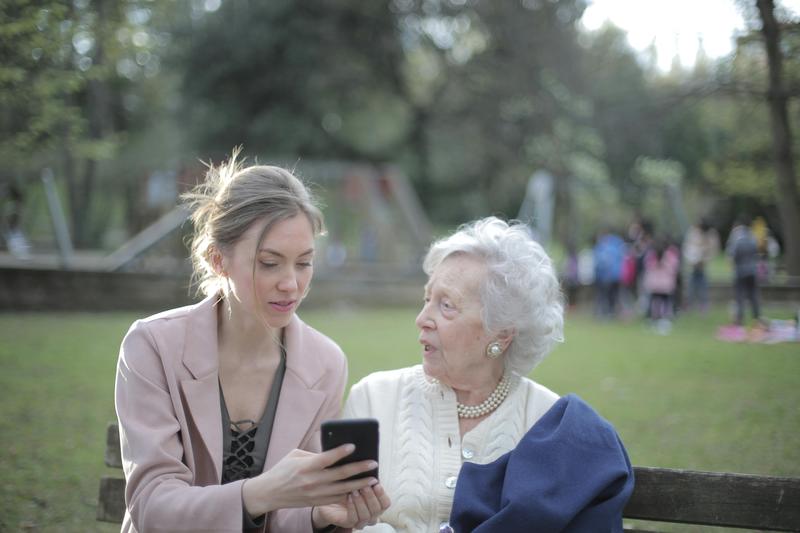How to Stop Over-Giving Without Losing Connection
You ever notice how some people are always giving— their time, their energy, their attention— but somehow end up feeling drained instead of fulfilled? And if you’ve been that person… you know the pattern I’m talking about. That quiet pull to overextend. That subtle guilt when you try to say no. That sense that if you stop giving… the connection might disappear.
Today we’re talking about something that looks generous on the surface— but often hides a deeper pattern underneath. Over-giving. Why it happens. What’s actually being trained when you do it. And how to build a new internal pattern— one that lets you stay connected without abandoning yourself.
The Hidden Pattern Behind Over-Giving
Here’s the thing. Over-giving isn’t really about generosity. It’s about safety. Most people who over-give learned, somewhere early on, that connection equals compliance. That love, approval, or peace only come when they take care of everyone else first. So their perception gets trained to scan for other people’s needs before they ever tune in to their own. The nervous system starts reading another person’s discomfort as an emergency to solve. And that becomes the emotional cue to act.
Now, from the outside, it looks kind. It looks thoughtful. It even gets rewarded. But the emotion underneath isn’t peace. It’s anxiety disguised as caring. It’s control disguised as kindness. And that’s the state being trained.

The Emotional Cost of False Calm
When someone’s lived like this long enough, they often say things like: “I just want to help.” “I can’t stand seeing someone upset.” “I feel bad if I don’t do something.” But what they’re actually describing is a trained emotional reflex. Their nervous system doesn’t know how to feel calm unless someone else feels calm too. So the moment tension shows up— they move to fix it. Not because it’s truly helpful, but because it’s how they regulate their own internal discomfort.
That’s not generosity. That’s dependency in disguise. And when you keep training that pattern, you start building your sense of worth on how useful you are to others. The result? You feel empty even when you’re surrounded by people. You say yes when you mean no. And over time, you lose the ability to feel what’s true for you.
Reclaiming the Internal Reference Point
So what does it look like to change this? It starts with something deceptively simple: You train your attention back to yourself— not to analyze, but to witness what happens in real time. You notice when someone’s energy shifts, and your instinct is to rush in. You feel that surge of emotion— the tension, the impulse, the subtle panic— and you don’t move. You just stay.
That pause is where the training begins. You’re teaching your system a new truth: “I can be connected and still stay grounded in myself.” Every time you hold that internal line, you’re rewiring your nervous system. You’re retraining your emotional pattern. You’re proving to yourself that peace isn’t dependent on anyone else’s mood.

The Misperception About Boundaries
Now, most people hear “boundaries” and think: “I need to protect myself from others.” But real boundaries aren’t about walls. They’re about clarity. A true boundary isn’t an action you take— it’s a state you train. It’s the ability to stay present in your own body even when someone else is uncomfortable.
When you’re grounded, you can say no without guilt. You can listen without absorbing. You can care without carrying. Because your nervous system no longer interprets their discomfort as a threat to your safety.
Let’s look at a quick example. Someone I once worked with had this habit— whenever her partner came home frustrated from work, she’d drop everything to fix his mood. Make dinner, offer advice, start soothing. It wasn’t about him. It was about her discomfort with his emotional intensity.
Over time, she trained herself to stay instead. To breathe. To let him have his emotion without losing her own center. And eventually, she realized— the relationship didn’t actually need all that fixing. It just needed her calm presence. That’s the shift. From reactive giving to aligned being.
The Emotional State You’re Really Training
When you stop over-giving, you’re not training selfishness. You’re training stability. You’re teaching your system to experience peace without needing external validation. That’s the real work. Because as long as your calm depends on someone else’s behavior, you’ll never actually feel free.
This is where emotional training becomes practical. If your perception is always scanning for what’s wrong, you’ll keep training anxiety. If your emotion spikes every time someone’s upset, you’ll keep training tension. If your thoughts spin with stories about needing to fix it, you’ll keep training guilt. And your actions—the giving, the rescuing— will reinforce that same emotional loop.
The only way out is to retrain the internal state itself. That’s the foundation of real alignment— when your giving comes from fullness, not fear.

The Emotional Withdrawal Phase
Now, when you start practicing this, don’t be surprised if it feels… wrong. Your system will interpret not giving as withholding love. You might feel guilt. You might feel fear. You might even feel like you’re becoming cold or uncaring. That’s not truth. That’s just your nervous system detoxing from an old identity.
The discomfort you feel isn’t a sign you’re doing it wrong— it’s the emotional intensity of retraining a new state. Each time you sit in that discomfort and stay grounded, you’re proving something powerful to your body: “I can feel tension and stay steady.” “I can be loving and still choose myself.” That’s the muscle. And like any training, repetition builds strength.
Connection Without Compromise
As your emotional system stabilizes, something interesting happens. Your relationships start to change. Some people will rise to meet you. Others may fall away. But here’s the deeper truth: real connection only exists where two people are both self-connected.
You can’t actually connect from emptiness. You can only attach. And attachment feels like connection, until the energy runs out. When you train stability instead, you start giving differently. Not to get love, not to avoid guilt, but because it’s aligned. From that state, your giving has power. It’s clear, it’s calm, it’s clean. You can show up fully and walk away without resentment. That’s when you know the pattern has shifted.

The Subtle Addiction to Being Needed
Let’s go one layer deeper. Many over-givers aren’t just avoiding conflict. They’re addicted to being needed. Because when you’ve spent your life being the fixer, the helper, the one people rely on— it creates an emotional high. It feels like purpose. It feels like connection. But it’s actually dependency.
The nervous system becomes hooked on that sense of significance. So when things quiet down, you might feel restless or invisible. That’s not loneliness. That’s withdrawal from an identity. The training here is to let yourself experience peace without having to earn it. To sit in the stillness that used to feel empty, and discover it’s actually fullness.
That’s the emotional pivot point. It’s the difference between being driven by need and being led by alignment.
What Emotional State Are You Practicing?
If you’ve been over-giving, here’s a simple reflection: What emotional state are you practicing—over and over—without realizing it? Because every moment you override your truth to keep someone else comfortable, you’re practicing self-abandonment. Every time you say yes when you mean no, you’re training disconnection from your own perception.
Every time you rescue someone from their discomfort, you’re teaching your system that your peace depends on external control. But when you train presence instead, everything shifts. You start to notice the impulse before it takes over. You redirect your attention. You breathe, you stay, you don’t fix. And over time, your nervous system learns: I can feel calm, even when others don’t. That’s what real emotional freedom feels like.

Reframing Generosity
Let’s reframe generosity for a second. True generosity isn’t measured by how much you give— it’s measured by the state you give from. If your giving drains you, you’re not actually giving—you’re trading. You’re trading energy for approval, time for safety, or attention for love.
But when your giving comes from stability, there’s no transaction. There’s no resentment. There’s no scoreboard. There’s just expression. And that kind of generosity doesn’t deplete you— it expands you. Because it’s aligned with who you’re becoming, not the pattern you’re escaping.
Integration: The New Default State
Eventually, with enough repetition, the nervous system starts to catch on. It realizes— there’s no threat in staying still. There’s no danger in saying no. There’s no loss in letting others have their own experience. And that’s when giving becomes effortless again— but this time, from a completely different energy.
You’re no longer giving to earn connection. You’re giving as an expression of connection. It’s clean. It’s calm. It’s steady. That’s the natural outcome of training alignment. Not a boundary you have to hold, but a state that holds itself.
If you’re ready to stop managing symptoms and start training a steady, resilient inner state, I’ve built a system for that. It integrates perception, emotion, and the nervous system— so you don’t just understand your patterns… you actually shift them. I also share practices weekly on Instagram—@mikewangcoaching. And if you want more depth, you can join the newsletter here.

